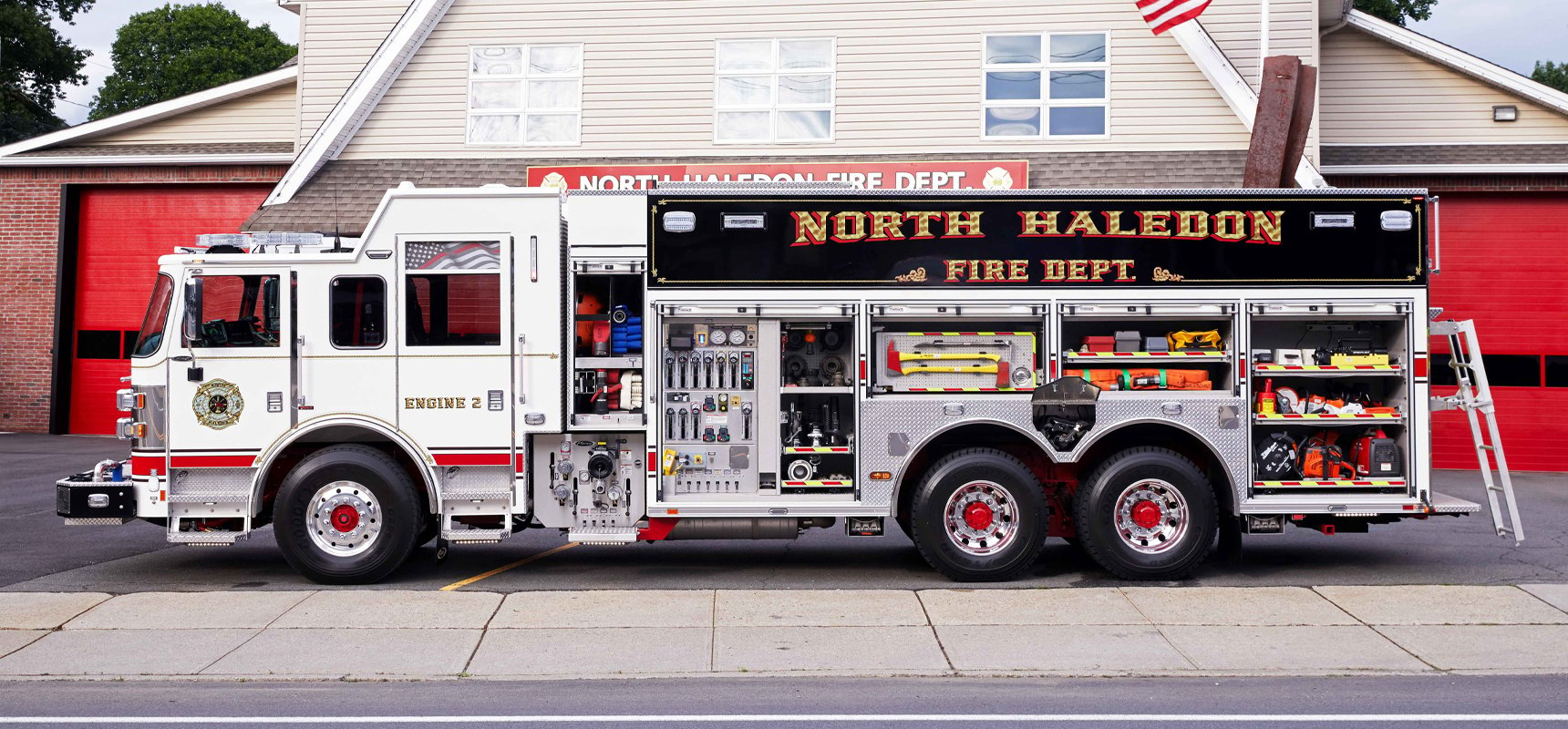 In fire truck design and manufacturing, a traditional pump house takes up a significant amount of space and subsequently dictates the design of the truck. Designing a fire truck around the needs of the fire department, instead of building a truck around the pump house, is the reason Pierce Manufacturing introduced the Pierce Ultimate Configuration or PUC™ pump.
In fire truck design and manufacturing, a traditional pump house takes up a significant amount of space and subsequently dictates the design of the truck. Designing a fire truck around the needs of the fire department, instead of building a truck around the pump house, is the reason Pierce Manufacturing introduced the Pierce Ultimate Configuration or PUC™ pump.
Introduced in 2007 and updated in 2022, the PUC water pump is an innovative apparatus solution designed to simplify firefighters’ actions and reduce unnecessary risk. By eliminating the pump house and moving the pump forward below the cab, the PUC reduces overall vehicular space used for fire suppression and maximizes space for equipment.
Everything about the PUC pump is designed to ease the way firefighters climb, ride, drive, carry and store gear, remove hoses and service critical systems. Now, with a 2000 gpm water pump, the PUC is truly leading the industry in terms of function and design.
Continue reading below to get a detailed look at the PUC pump, its key attributes (including a new industry-leading 2000 gpm water pump) and some factors fire departments may want to consider in the design of fire apparatus.
What Is a Fire Truck Pump House?
A traditional pump house is located behind the cab, in front of the rear body compartments. In essence, a pump house is a separate module that contains all of the pumping needs of fire apparatus. This includes the plumbing, water pump valving and the controls for pump operation.
A PUC, on the other hand, eliminates the module located between the cab and the rear body compartment, which creates more truck configuration options for fire departments.
How Does Eliminating the Pump House Benefit Fire Departments?
The unique configuration of the PUC pump allows for enhanced features, safety, storage and overall apparatus versatility. Below, we’ve outlined some of the key benefits of the PUC design.
1. Improved Pump Component Safety Features
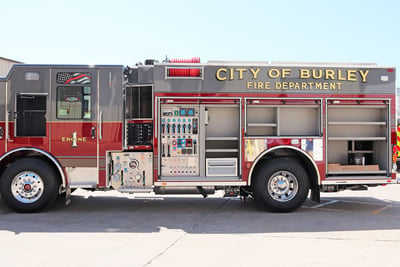 Traditionally, pump and plumbing components are located in the pump house, with the control panel positioned around the discharges. As a result, firefighters are sharing space with all the hoses connected to the panel.
Traditionally, pump and plumbing components are located in the pump house, with the control panel positioned around the discharges. As a result, firefighters are sharing space with all the hoses connected to the panel.
With a PUC configuration, the pump is located under the cab, stationed to the left of the control panel. As such, the PUC creates two distinctive operating areas, allowing the pump operator to work independently while other firefighters manage the hose and discharges. This innovative design feature significantly improves safety for firefighters.
2. Pierce PUC Pump & Simplicity of Sure‐Shift Operation
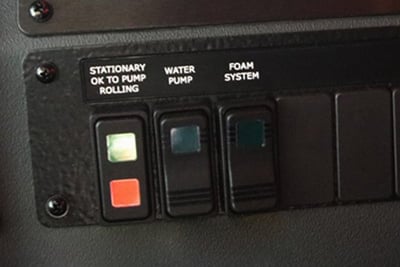 Inside the cab on a traditional pump house, activating the pump requires engaging the parking brake, shifting the truck into neutral, turning the pump shift on and then placing the truck back in drive. This four-step process can be cumbersome and may waste valuable time in an emergency.
Inside the cab on a traditional pump house, activating the pump requires engaging the parking brake, shifting the truck into neutral, turning the pump shift on and then placing the truck back in drive. This four-step process can be cumbersome and may waste valuable time in an emergency.
The Sure-Shift operation of the PUC reduces shift operations. When a PUC fire truck approaches an emergency scene, the operator engages the parking brake, which shifts the truck into neutral. Then with a single touch, water and foam are activated, allowing the system to be up and functional before the operator is out of the cab. The PUC provides pump and roll as standard to allow you to fight fires on the move.
NFPA 1906: Standard for Wildland Fire Apparatus, defines pump-and-roll as delivering 20 gpm at 80 psi while traveling 2 mph.
Why is pump and roll such a critical component of fire apparatus?
This feature means that firefighting operations can follow a moving fire, making response more agile and adaptive, keeping firefighters safe.
3. Serviceability to Pump and Plumbing
Servicing the pump, integrated pump transmission and plumbing is simplified with the PUC configuration. With a tilting cab, the pump is on top of the frame rails, easily accessible with no need to climb underneath the apparatus for maintenance.
All service points have been simplified with comprehensive pump and valve access, above frame pump service, automated service and maintenance messages, and direct support from a single-source manufacturer.
As a single-source manufacturer, Pierce and its dealer network stock a wide variety of repair parts to service the PUC configuration. Service parts cover the pump, plumbing, valve controls and many pump panel components. Check out this blog article about Pierce’s product support for more details on servicing key systems, such as the PUC configuration, on Pierce fire apparatus.
4. More Compartment Space in Shorter Wheelbase
A traditional pump house takes up space; the PUC offers the same operational functionality in less space. This space reduction allows for increased compartmentation.
In fact, the pump operator’s panel is housed in the driver side front compartment, which leaves the passenger side free for customization with generously sized full-height, full-depth rescue style compartments.
The condensed pump area also shortens the wheelbase, as short as 163.5” (depending on body and chassis) and allows up to a 50-degree cramp angle. To further improve maneuverability, a fold-up rear work platform is designed into the tailboard compartment to minimize the overall length and improve the angle of departure.
Interested in more information about strategic compartmentation? Read our educational article now.
5. Clean Compartment Interiors and a Clean Rescue Look
When you open a compartment on a PUC, you may be surprised by what you see.
In a more traditional truck, the wire harnessing, wire tracks and the nuts and bolts are all visible. The PUC features 26" deep compartments and up to 500 cubic feet of big, clean, uncluttered storage space with covered raceways, recessed shelf tracks, and bright strip lighting that reduces shelving shadows and gives excellent night-time visibility.
The same clean, functional design affects the overall look of the apparatus as well. With a more traditional fire truck, the side appearance can look choppy with variations in both body height and compartment shape and size. Without a doubt, the PUC changed the industry by offering a “heavy rescue look” with flat sides from the cab to rear panels.
6. Ergonomic Features and Functionality
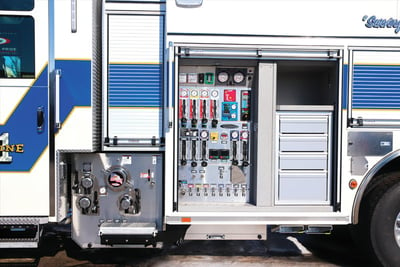 The PUC was designed to consider functionality and safety, but also includes ergonomic features to help improve operational efficiency around the apparatus. The primary ergonomic considerations are the location and height of the plumbing and crosslays.
The PUC was designed to consider functionality and safety, but also includes ergonomic features to help improve operational efficiency around the apparatus. The primary ergonomic considerations are the location and height of the plumbing and crosslays.
On a PUC, the plumbing connections are located low to the ground. This helps improve both speed and functionality on-site because connections are easier to access. Located directly above the connections, the crosslays are comfortably positioned at chest height to make it easy for firefighters to grab and go with hose in hand. The lower crosslay positioning also reduces the risk of injury. When hoses are stored high on a fire truck, they are harder to access and pull down, posing a risk for falling and injuring firefighters below.
7. Enclosed Pump Panel Controls
The pump operator's panel on the PUC is enclosed in the front body compartment to keep it clean of moisture, grit and grime. The panel features large lever handles with a locking feature to prevent valve creep under pressure. In addition, the pump panel monitors fuel levels, pump prognostics and includes a large engine RPM display. The Control Zone™ pump panel is designed and organized to meet your needs.
8. Water Pump and Integrated Pump Transmission
The latest enhancements to the PUC are the leading water pump capabilities in the marketplace, ranging from 1250 - 2000 gpm.
The 2,000 gpm pump (rated for draft) weighs 30-percent less than most existing pumps on the market and comes with a 7-year standard warranty.
The new PUC design with a 2000 GPM water pump provides the support and versatility that many fire departments need. The PUC is the first apparatus that offers the most complete single-source build, from the chassis and body down to the pump.
The new integrated pump transmission offers firefighters a rugged, reliable pump-drive to continue the mission-purpose attributes of the PUC.
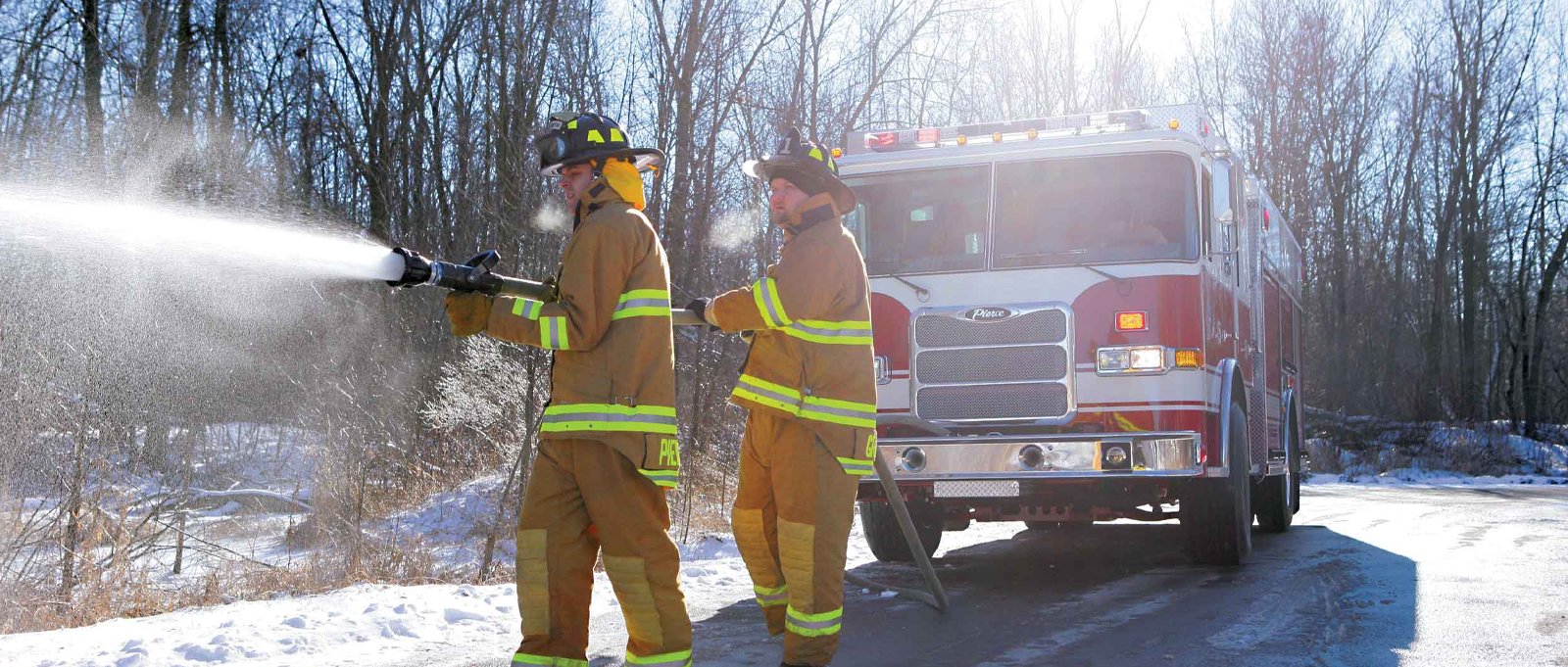
9. More Power to Support Operations
When seconds count, fire trucks need to have the speed, maneuverability, storage and water pump power capacity to arrive and respond quickly. The PUC apparatus has several powertrain options available to fire departments.
- Cummins L9
- Cummins X12
- PACCAR MX-13
The purpose-built fire truck is designed around the needs of the fire service and of each unique department.
Customer Feedback on PUC
Randy Passagaluppi, captain and apparatus committee chair for James City County Fire Department in Virginia, has a great deal of experience working with PUCs. In fact, his fire department recently finalized the details of its 8th PUC on a Velocity® 100’ Aluminum Aerial Platform.
Why does the James City County Fire Department choose the PUC?
“The PUC assists with maneuvering in newer neighborhoods that are tight with small cul-de-sacs,” said Passagaluppi. “[The configuration] makes it easier for the apparatus to turn around.”
The fire department touts other reasons for selecting the PUC as well.
“The biggest benefits to us are the shorter overall wheelbase and compactness of the pump,” he added. “It also allows for more compartment space, especially with aerials.”
PUC Availability
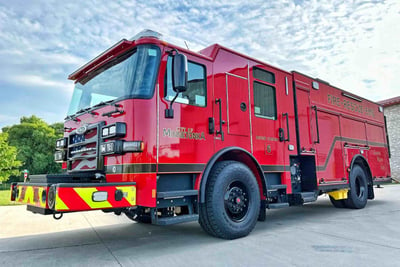 The PUC is available on Enforcer, Velocity, Impel, Arrow, and Quantum Pierce custom chassis, and the product platforms listed below:
The PUC is available on Enforcer, Velocity, Impel, Arrow, and Quantum Pierce custom chassis, and the product platforms listed below:
- Pumpers
- Aerials
- Tankers
- Rescues
If you’d like to learn more about the PUC, please download the Pierce Ultimate Configuration Brochure. In addition, find a dealer near you to discuss if the PUC might be the right choice for your next fire apparatus.
Recent PUC Deliveries
View recent PUC deliveries now.
PUC technology is an ideal solution that allows fire departments the opportunity to design the vehicle around their unique needs, and not around the pump.
Do you love your PUC? What feature does your department value most?
Share your comments below!